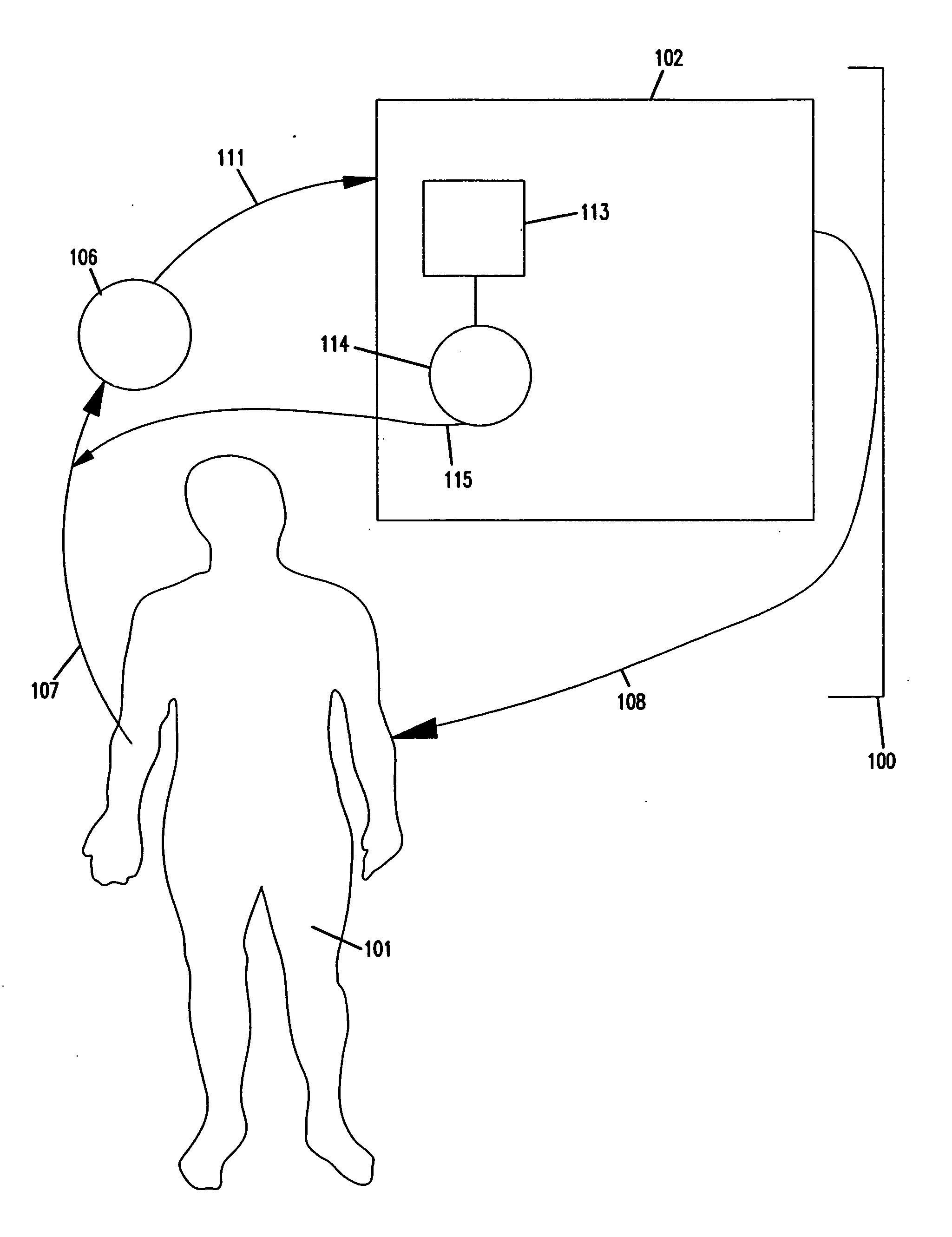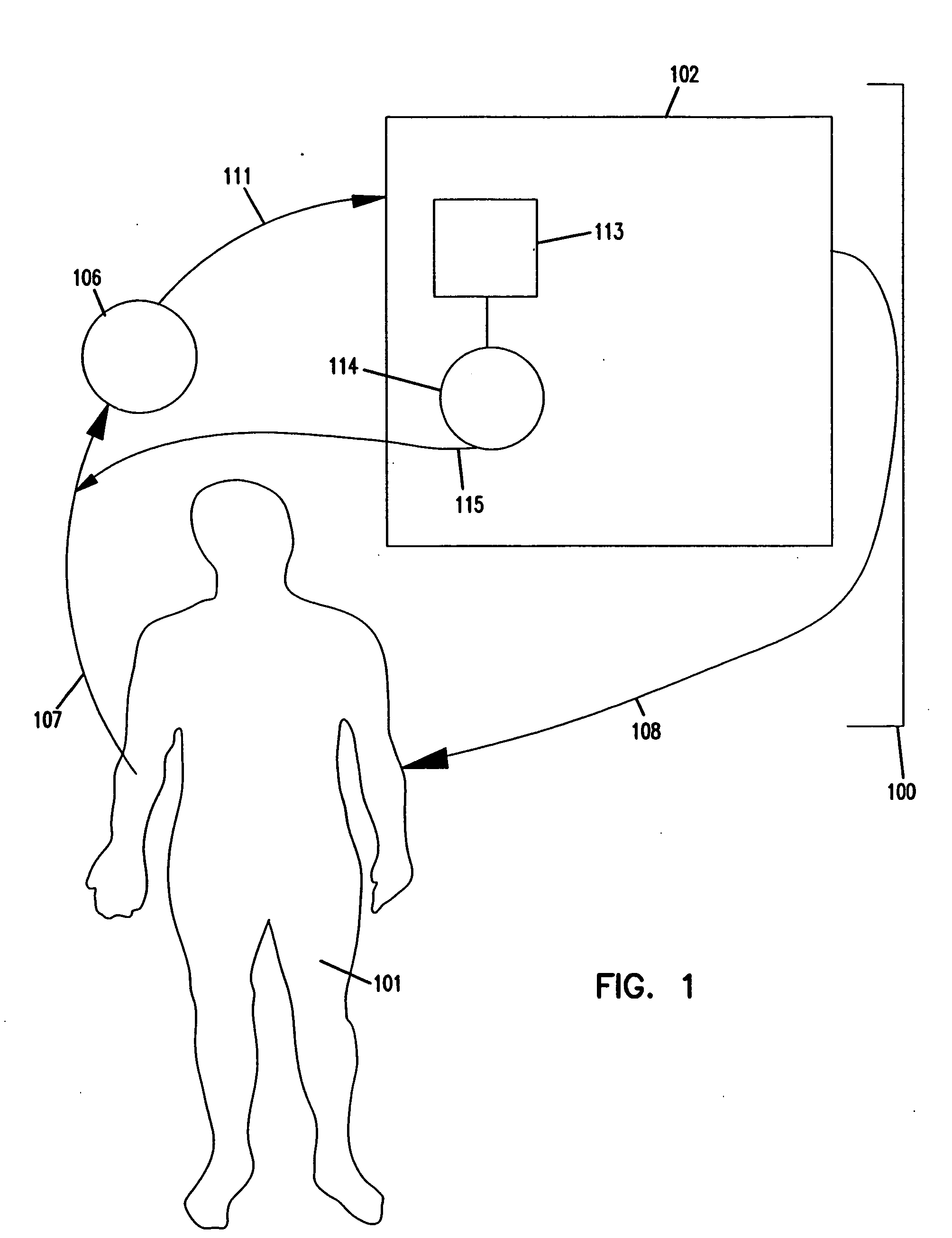Apheresis methods and devices
- Summary
- Abstract
- Description
- Claims
- Application Information
AI Technical Summary
Benefits of technology
Problems solved by technology
Method used
Image
Examples
working examples
[0081] The following examples are provided as a non-limiting illustration of the invention.
example 1
[0082] Donors. All subjects were healthy allogeneic donors for lymphocyte or cytokine stimulated PBSC large volume leukapheresis procedures (LVL) who gave informed consent for apheresis and laboratory analysis on approved institutional protocols. Subjects in this study had normal hepatic and renal function tests, adequate peripheral venous access for a dual arm procedure without the use of a central apheresis catheter, were at least 18 years of age and weighed greater than 50 kg. For PBSC collections, subjects received 10 μg / kg daily for 6 days of subcutaneous granulocyte colony stimulating factor (GCSF) with LVL performed on the morning of day 5 and 6. Lymphocyte collections were performed prior to the first day of administration of GCSF. The estimated donor blood volume was calculated from the donor gender, height and weight.
[0083] Apheresis Procedures. LVL were performed using the small volume collection chamber on a CS-3000 cell separator (Baxter, Deerfield Ill.) with a maximum...
example 2
[0106] Prophylactic intravenous calcium was also administered in an additional 240 LVL performed in adults at citrate infusion rates between 1 and 2.6 mg / kg / min with an average of 15 L processed. Intravenous magnesium was prophylactically administered in addition to calcium in 17 of these procedures, in which the average citrate infusion rate was 1.92 mg / kg / min and the average blood volume processed was 21 L. Mild paresthesias were observed in 4 of these 17 donors. Calcium without magnesium was administered to the remaining 223 procedures, which were performed at an average citrate infusion rate of 1.63 mg / kg / min (including 40>2.0 mg / kg / min and 69>1.8 mg / kg / min), with an average volume processed of 14.7 L. Mild symptoms occurred in 39 donors, 13 at citrate infusion rates greater than, and 26 at citrate infusion rates less than 1.8 mg / kg / min. The whole blood processing rate was decreased in two donors to control persistent symptoms. There were two episodes of dizziness, no symptoms>l...
PUM
 Login to View More
Login to View More Abstract
Description
Claims
Application Information
 Login to View More
Login to View More - R&D
- Intellectual Property
- Life Sciences
- Materials
- Tech Scout
- Unparalleled Data Quality
- Higher Quality Content
- 60% Fewer Hallucinations
Browse by: Latest US Patents, China's latest patents, Technical Efficacy Thesaurus, Application Domain, Technology Topic, Popular Technical Reports.
© 2025 PatSnap. All rights reserved.Legal|Privacy policy|Modern Slavery Act Transparency Statement|Sitemap|About US| Contact US: help@patsnap.com



